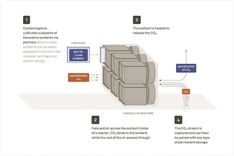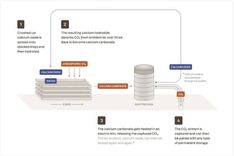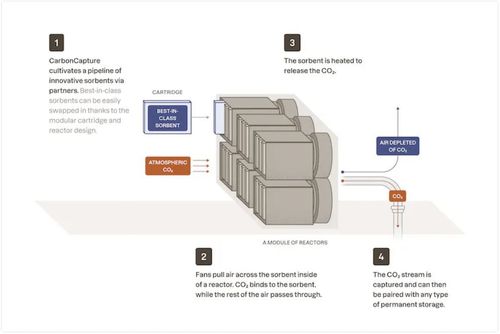Frontier sign $47M agreement with CarbonCapture Inc. and Heirloom




CarbonCapture's modular sorbent cartridge system removes CO₂. / SOURCE: Frontier
November 22, 2023
BY Frontier
Advertisement
Advertisement
Related Stories
Deep Sky Secures First-of-its-Kind Financing with Finalta Capital to Advance Carbon Removal in Canada
Deep Sky has secured an $11 million bespoke credit facility from Finalta Capital to finance its flagship Alpha carbon removal facility in Alberta. Alpha, the world’s first cross-technology carbon removal site, became North America’s first DAC project to sequester CO₂ underground.
Boral Successfully Trials Concrete with Recycled Concrete Aggregates Recarbonated via Carbon Capture from a Cement Plant – An Australian First
Boral has successfully trialed concrete made with recycled aggregates recarbonated via carbon capture technology from its Berrima cement plant. The pilot, supported by the federal CCUS Development Fund, replaced 50% of natural coarse aggregates with recarbonated recycled materials in a low-carbon mix.
Brazil has launched a national CCUS Subcommittee under its Ministry of Mines and Energy to implement the country’s 2024 Fuel of the Future law and anchor its strategy for COP30. The group brings together Petrobras, TotalEnergies, FS Energia, SLB New Energy, and other key stakeholders to advance carbon capture, storage, and regulatory frameworks.
Babcock’s LGE business has secured Approval in Principle from Lloyd’s Register for its ecoCPTR® onboard carbon capture system. The technology combines Aqualung’s facilitated transport membrane capture with Babcock’s ecoCO2® system, offering a compact, modular solution for both new and retrofitted vessels.
The Government of Canada has announced $5.8 million in funding for carbon capture, utilization, and storage projects in British Columbia. The investments will support Svante, Anodyne Chemistries, and Agora Energy Technologies in advancing CO₂ capture, storage, and conversion innovations, from flue gas utilization to producing valuable chemicals.





